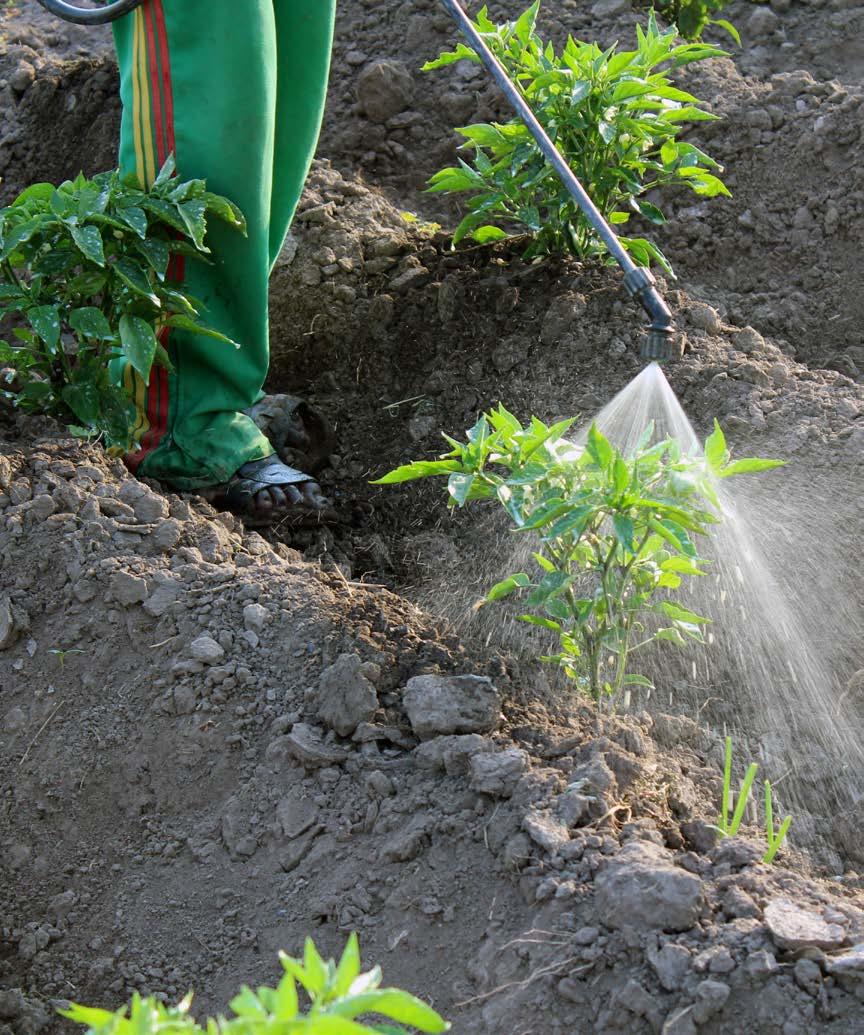
2 minute read
Case study 4 Ethiopia
Country: Ethiopia Partner Organisation: PAN-Ethiopia Year conducted: 2018 Number of participants: Random selection of 15 smallholders from each of 5 villages, totalling 75 smallholder farmers (six women), plus a smaller sample of 15 casual workers (one woman). Assessed by formal quantitative survey via individual interviews, conducted by trained field agents. Description of participants: For 56% of respondents, vegetable production was their only income. The other 44% grow cereals, rear livestock and practice other non-farming activities in addition to vegetable production. The size of farmland cultivated under vegetables ranged from a minimum of 0.125ha to a maximum of 8ha, with an average of 0.65ha. Location: Five villages [Aluto, Abein Deneba, Abine Germama, Bochesa and Edo Gojola] in Adami TuluJido Kombolcha district within East Shoa Zone of Oromia Region in the Central Rift Valley. This is a major vegetable growing area, supplying much of the capital’s vegetable demand. Protective equipment: Not assessed although the area is renowned for very poor pesticide use practices, including very little use of proper PPE.
% pesticide users reporting APP in previous 12 months:
6
6
Farmer respondents
60 farmer respondents (i.e. 80% of the total sample population) said that they didn’t suffer any pesticide poisoning in the last 12 months (Jun 2017-Jun 2018). The remaining 15 farmers (20%
of the farmers) said either they themselves or somebody from their family was poisoned.
From those farmers who reported a poisoning incident, 14 of them, who were adults, suffered the poisoning incident themselves. The remaining person reported was 15-18 years old and the reported poisoning incident happened because he/she drank the chemical. The respondent did not indicate whether this was deliberate intent of self-harm or accidental poisoning, e.g. by drinking liquid pesticide stored in a soft drinks bottle.
Farmer worker respondents
Out of the 15 respondents, 11 of them (73%) said they have experienced at least one pesticide poisoning incident in the last 12 months. Out of these 11 casual workers who experienced poisoning, 2 of them (18%) were 15-18 years old while the other 9 were adults.
% farmers missing days’ work due to APP: Not assessed. Signs and symptoms reported: Headache, irritated skin, stinging eyes and nose, stomach upset, fainting, numbness, vomiting, blurred vision, dizziness, diarrhoea. % seeking medical attention: Not assessed.
Active ingredients in pesticides reported associated with APP:
Malathion, mancozeb, profenofos, lambda-cyhalothrin, metalaxyl, spinetoram, Mitac, endosulfan, 2, 4-D, and dimethoate.
Conclusion
The range of symptoms reported above align well with typical acute pesticide poisoning symptoms from many other surveys, especially of exposure to neurotoxic active ingredients, and with PAN UK’s two decades of experience of documenting poisoning incidents (following recommended guidance for incident investigation from Rotterdam PIC Convention). The data from the very small sample of farmer and farm workers interviewed suggests an alarmingly high rate of possible poisoning incidents. Reducing farm worker exposure to pesticides and the risk of ill-health effects is challenging, as they are casual, hired labourers with little power to change their practices, rarely staying on the same farm and hard to engage in training or awareness-raising.
Photo: Spraying pesticides with no protective equipment in Ethiopia - credit PAN Ethiopia









